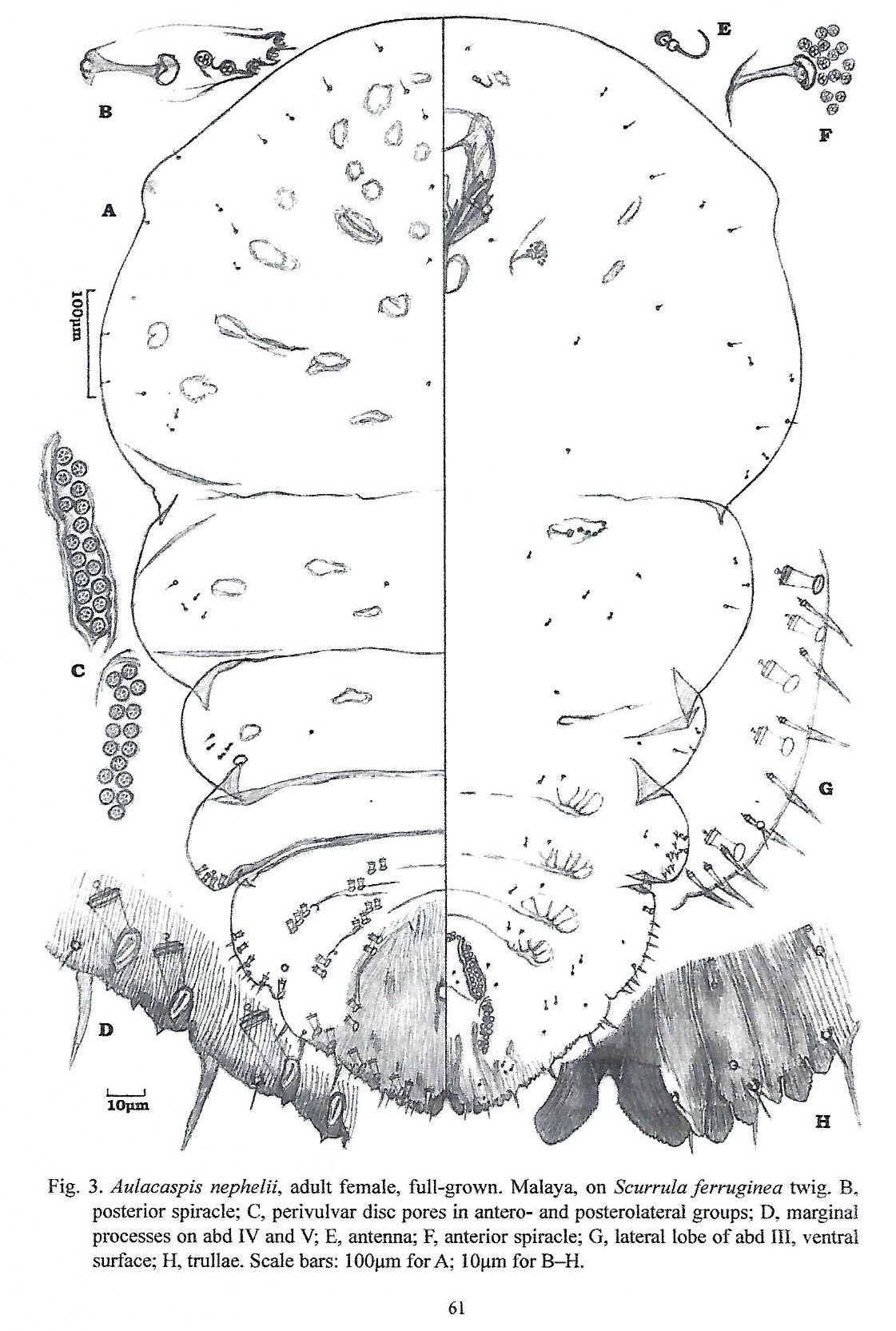Valid Names Results
Aulacaspis nephelii Takagi, 2016 (Diaspididae: Aulacaspis)Nomenclatural History
- Aulacaspis nephelii Takagi 2016: 47-49. Type data: MALAYA: Pahang, Mencali Forest Reserve, near Kuala Rompin, on Nephelium maingayi, 8/17/1990, by S. Takagi.. Holotype, female, by original designation Type depository: Kepong: Forest Research Institute of Malaysia, Selandgor, Malaysia; accepted valid name Illustr.
Common Names
Ecological Associates
Hosts:
Families: 2 | Genera: 3
- Loranthaceae
- Helixanthera | Takagi2016
- Scurrula ferruginea | Takagi2018
- Sapindaceae
- Nephelium maingayi | Takagi2016
Geographic Distribution
Countries: 1
- Malaysia | Takagi2016
Keys
Remarks
- Systematics: This species is most closely similar to Aulacaspis labucola. Above all, their agreement in the state of the basal connection of the median trullae, which are apparently zygotic, should be emphasized. It differs from A. labucola in having the dorsal macroducts apparently less numerous. (Takagi, 2016) Aulacaspis nephelii may be related to Aulacaspis scurrulae Takagi, which also burrows under the leaf tomentum on Scurrula ferruginea and was described as a member of the group. It differs from A. scurrulae in the body shape of the adult female, being robust and cuneiform at full growth, and also in the median trullae, which are less roundish on the diverging mesal margins even when they are much thickened. In other respects, these two species are considerably similar.
- Structure: Adult female body at full growth cuneiform in rough outline, prosoma well swollen, distinctly wider than postsoma, broadly rounded along anterior margin, weakly lobed on lateral sides; prosomatic tubercles usually produced, at times rather strongly. (Takagi, 2016) The specimens from Scurrula do not exactly agree with the type series from Nephelium and Helixanthera in having the median trullae broader and the basal zygosis of the trullae usually strongly developed. However, they are considerably variable in the breadth of the median trullae, approaching to the type series at one extreme of the variation, and are variable in the development of the basal zygosis so broadly as to overlap with the type series. It is not knowable whether they represent a genetically differentiated form adapted to the host plant or a case of host plant effect on phenotype. (Takagi, 2018)
- Biology: Occurring on leaves and exclusively on the lower surface (Takagi, 2016)
- General Remarks: Detailed description and illustration in Takagi, 2016.
Illustrations
Citations
- Takagi2016: description, diagnosis, distribution, host, illustration, structure, taxonomy, 47-49, 67
- Takagi2018: description, diagnosis, distribution, host, illustration, taxonomy, 42-43, 61, 62



